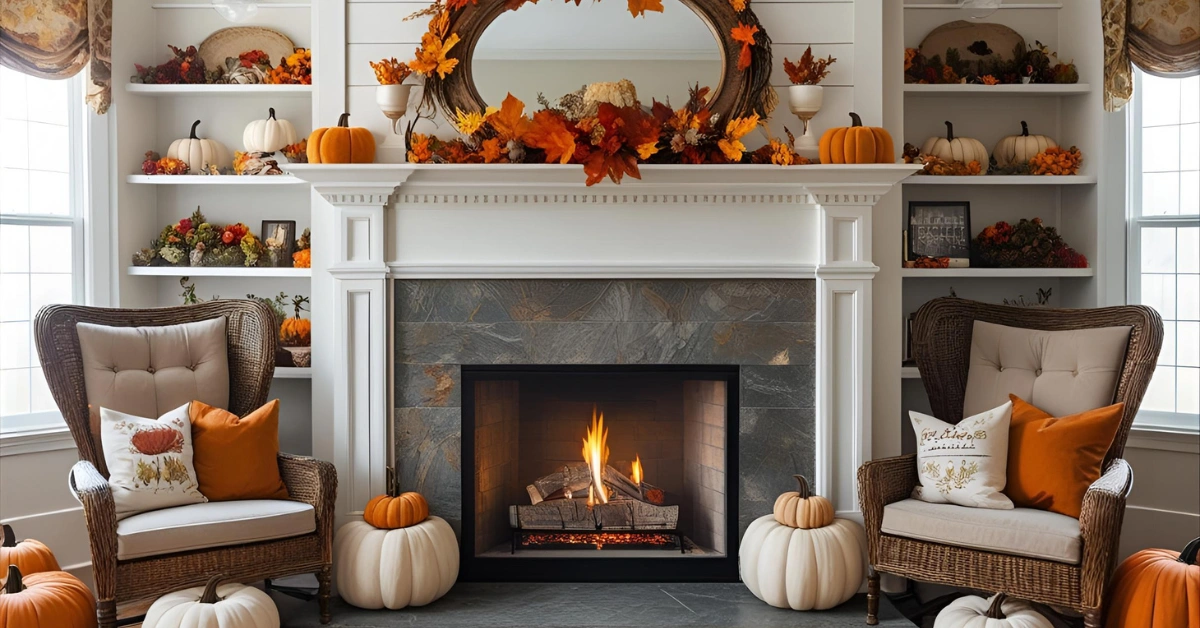13 Stunning Japandi Fireplace Design Ideas
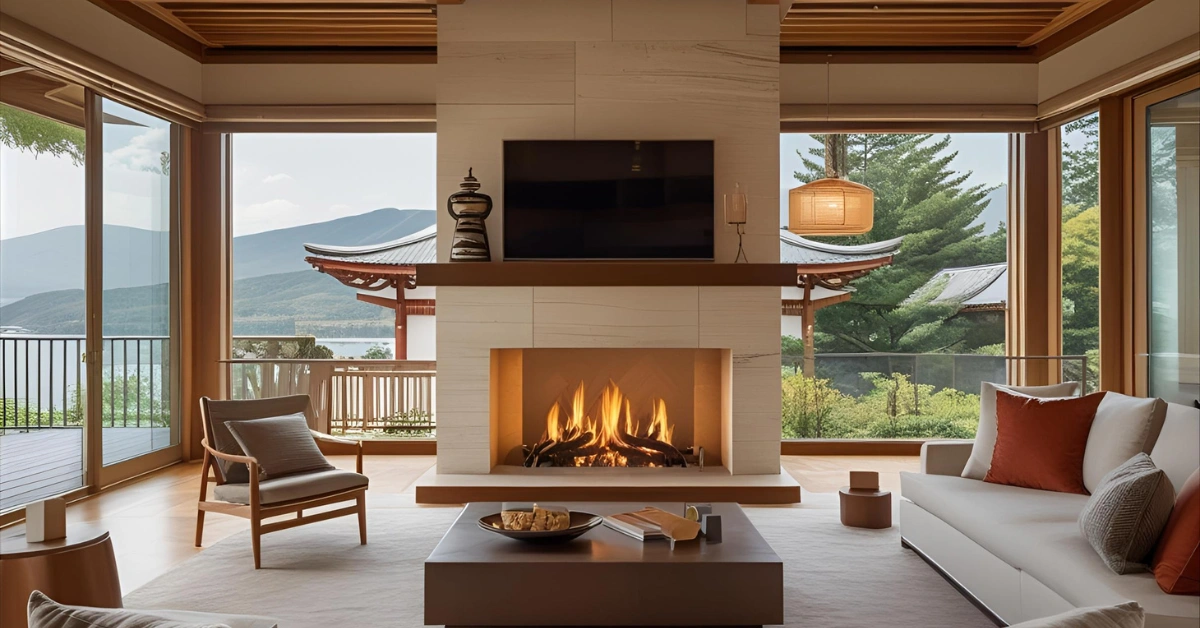
Fireplaces often feel either too traditional or overly modern, leaving homeowners struggling to find a design that feels both cozy and sophisticated. Many want a fireplace that serves as a stunning focal point without overwhelming their space or clashing with their aesthetic vision. Enter Japandi fireplace design, a perfect solution that marries Japanese minimalism with Scandinavian warmth. This hybrid style creates fireplaces that are functional, elegant, and timeless, offering a serene yet inviting ambiance for any home.
In this comprehensive guide, we’ll explore the essence of Japandi fireplace design, its core principles, and practical ideas to bring this aesthetic into your living space. From material choices to layout tips, you’ll find everything you need to craft a fireplace that balances simplicity and coziness while staying true to the Japandi philosophy.
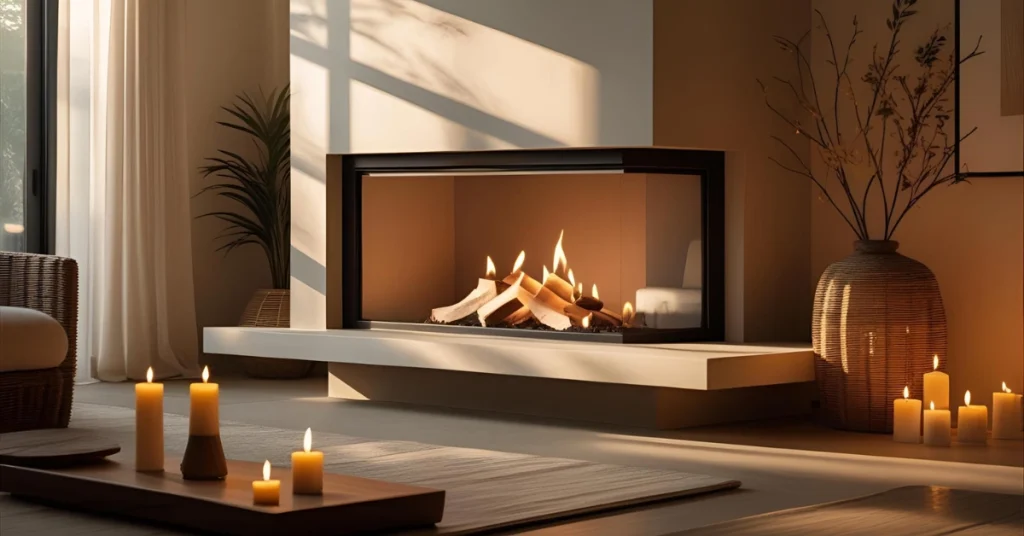
What is Japandi Fireplace Design?
Japandi is a design trend that blends the clean lines and minimalism of Japanese interiors with the warmth and functionality of Scandinavian design. When applied to fireplaces, this style creates a focal point that feels both modern and timeless, emphasizing natural materials, neutral colors, and uncluttered aesthetics.

The Origins of Japandi Style
The term “Japandi” emerged in the early 2010s, combining “Japan” and “Scandi” to describe a growing trend in interior design. According to Architectural Digest, Japandi gained popularity as homeowners sought spaces that felt calm yet welcoming, especially in urban environments where simplicity is key. This style draws from Japanese wabi-sabi, which celebrates imperfection, and Scandinavian hygge, which prioritizes coziness.
Why Japandi Works for Fireplaces
Fireplaces are inherently warm and inviting, but traditional designs can feel heavy or dated. Japandi fireplace design reimagines this classic feature with sleek lines, natural textures, and a focus on functionality. The result is a fireplace that feels like a natural extension of your living space, enhancing both aesthetics and comfort.
Core Principles of Japandi Fireplace Design
To create an authentic Japandi fireplace design, focus on these key principles:
- Minimalism: Avoid ornate details or excessive decoration. Keep the design clean and uncluttered.
- Natural Materials: Use wood, stone, or ceramic to create an organic feel.
- Neutral Color Palette: Stick to earthy tones like beige, gray, white, or soft browns.
- Functionality: Ensure the fireplace is practical for heating and integrates seamlessly with the room.
- Balance: Combine sleek Japanese lines with cozy Scandinavian textures.
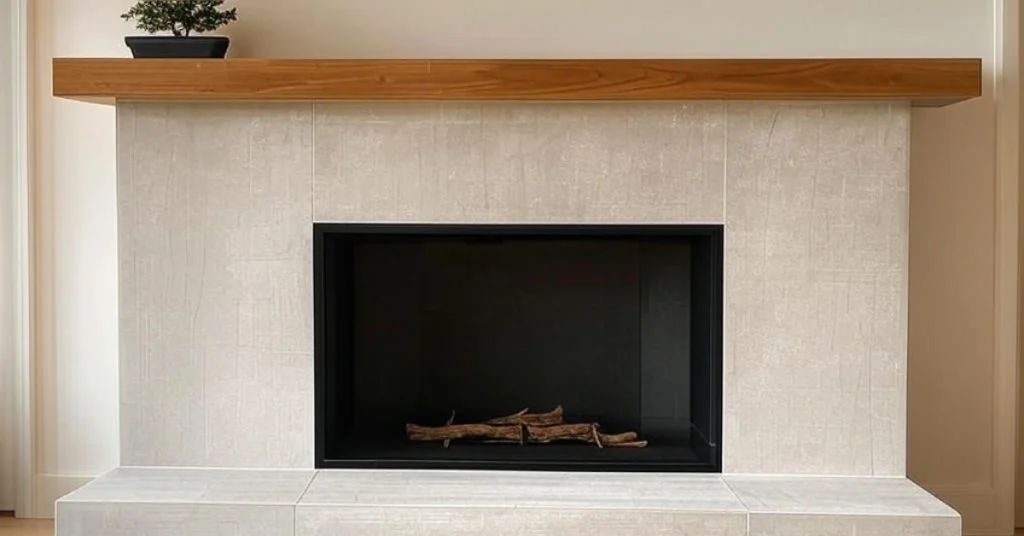
As interior designer Aiko Tanaka notes, “A Japandi fireplace should feel like a quiet moment in a busy world—simple, warm, and intentional.”
Popular Japandi Fireplace Design Ideas
Here are 10 inspiring Japandi fireplace design ideas to transform your home:
1. Sleek Stone Surround with Wooden Accents
A smooth stone surround in a neutral tone, like gray or taupe, paired with a minimalist wooden mantel creates a striking yet understated look. The stone provides durability, while the wood adds warmth. Place a single ceramic vase or a small stack of logs on the mantel for a touch of authenticity.

- Tip: Choose reclaimed wood for the mantel to add texture and sustainability.
- Example: In a Seattle home I visited, a gray slate fireplace with a live-edge oak mantel felt both modern and grounded, perfectly embodying Japandi.
2. Built-In Wall Fireplace with Plaster Finish
A recessed fireplace with a smooth plaster finish blends seamlessly into the wall, creating a minimalist look. Use a soft white or cream plaster to keep the space bright. Add a low wooden bench nearby for cozy seating.

- Why It Works: The flush design eliminates visual clutter, aligning with Japanese minimalism.
- Pro Insight: Designer Lars Jensen suggests, “A plaster finish softens the room while letting the fire’s glow take center stage.”
3. Floating Concrete Hearth
A floating concrete hearth offers a modern twist on traditional fireplaces. Its clean lines and industrial texture pair beautifully with soft furnishings like wool throws or linen cushions. Opt for a matte concrete finish to avoid a cold, overly modern feel.
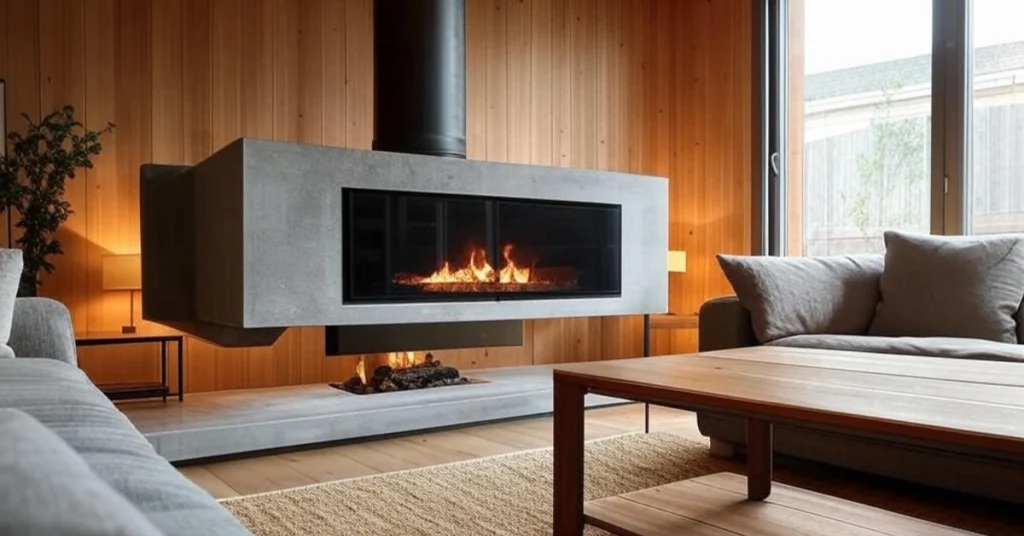
- Tip: Balance the concrete with a woven rug or wooden coffee table for warmth.
- Stat: According to Dwell, concrete fireplaces are 30% more popular in minimalist homes since 2020.
4. Tiled Fireplace with Geometric Patterns
Incorporate ceramic tiles with subtle geometric patterns in muted tones like charcoal or ivory. The tiles add visual interest without overwhelming the space. Pair with a simple steel frame for a modern touch.

- Example: A Japandi-inspired Airbnb in Kyoto used hexagonal tiles around a gas fireplace, creating a focal point that felt both artistic and restrained.
5. Corner Fireplace for Small Spaces
For compact rooms, a corner fireplace maximizes space while maintaining a cozy vibe. Use a combination of stone and wood, keeping the design low-profile to avoid dominating the room.

- Tip: Add built-in shelving above the fireplace for books or minimalist decor.
- Why It Works: Corner fireplaces free up floor space, aligning with Japandi’s emphasis on functionality.
6. Double-Sided Fireplace for Open-Plan Living
A double-sided fireplace serves as a stunning divider in open-plan homes. Use glass panels and a sleek stone surround to maintain an airy feel. This design allows the fire to be enjoyed from multiple rooms, enhancing the sense of connection.
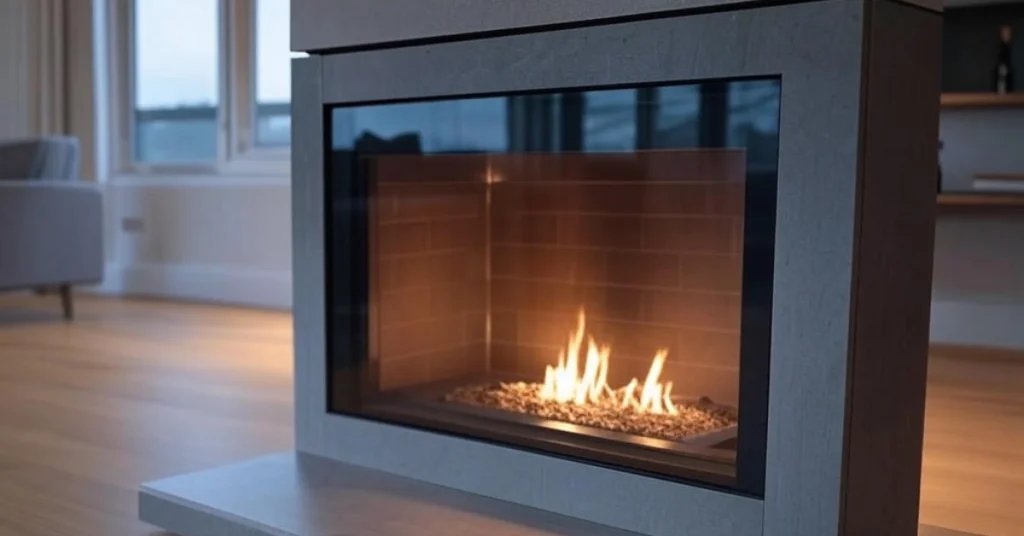
- Pro Insight: “Double-sided fireplaces create flow without sacrificing coziness,” says designer Maria Olsen.
7. Wood-Clad Fireplace with Hidden Storage
Wrap the fireplace in light wood paneling, such as ash or oak, and incorporate hidden storage for logs or media devices. This design keeps the space tidy and functional, a hallmark of Japandi style.
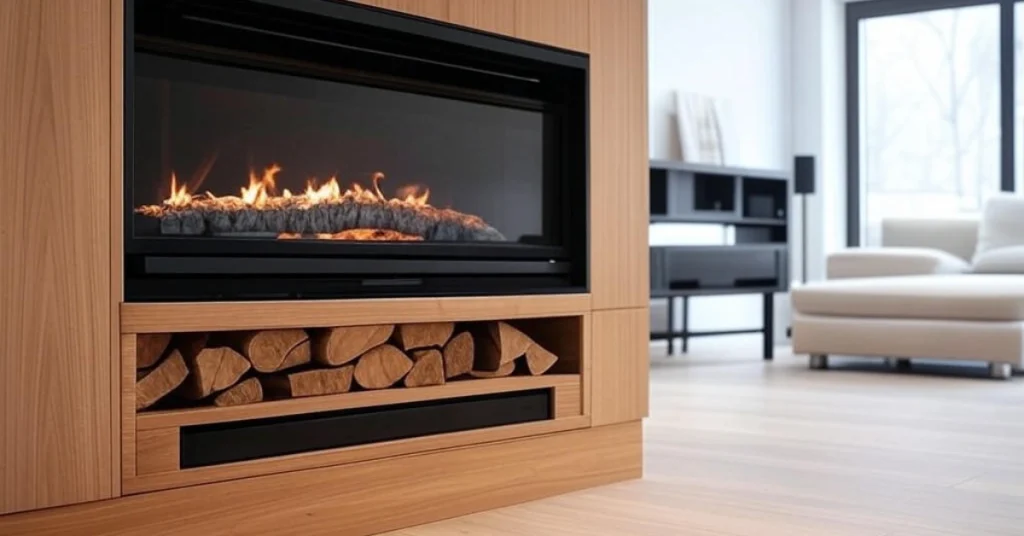
- Tip: Use matte wood finishes to avoid a glossy, overly modern look.
8. Minimalist Black Metal Fireplace
A black metal fireplace with clean lines adds a bold yet understated focal point. Pair it with a neutral rug and wooden furniture to soften the look. This design works well in urban lofts or modern homes.

- Example: A client in Portland used a black metal fireplace with a single bonsai plant on the hearth, creating a serene Japandi vibe.
9. Freestanding Stove with Japandi Flair
A freestanding wood-burning stove in matte black or white can mimic the simplicity of a traditional Japanese hearth. Surround it with a stone platform and minimal decor for a cohesive look.
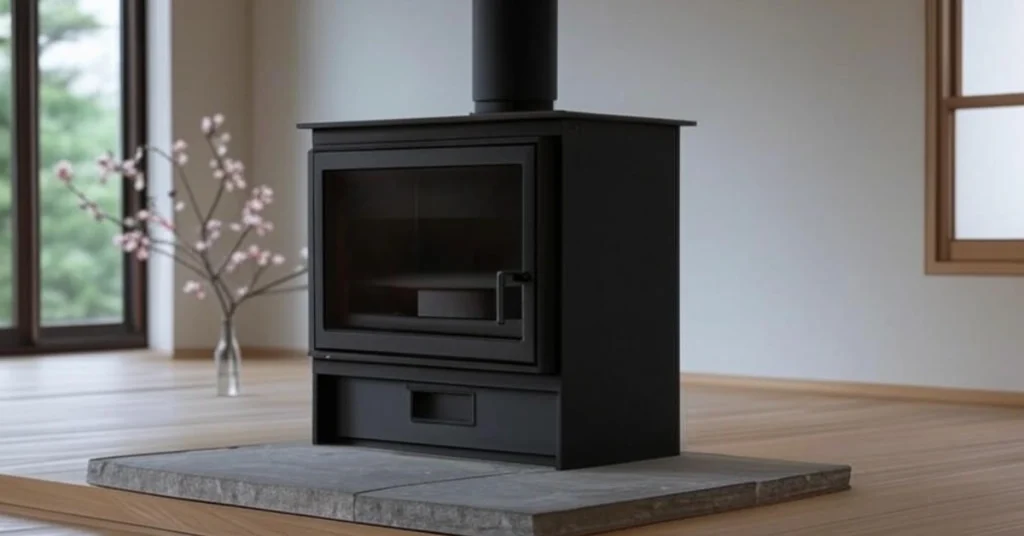
- Stat: Freestanding stoves are 25% more energy-efficient than traditional fireplaces, per Energy Star.
10. Asymmetrical Stone Fireplace
An asymmetrical stone fireplace with irregular shapes embraces wabi-sabi’s love of imperfection. Use rough-hewn stone and a simple wooden mantel to keep the design grounded.
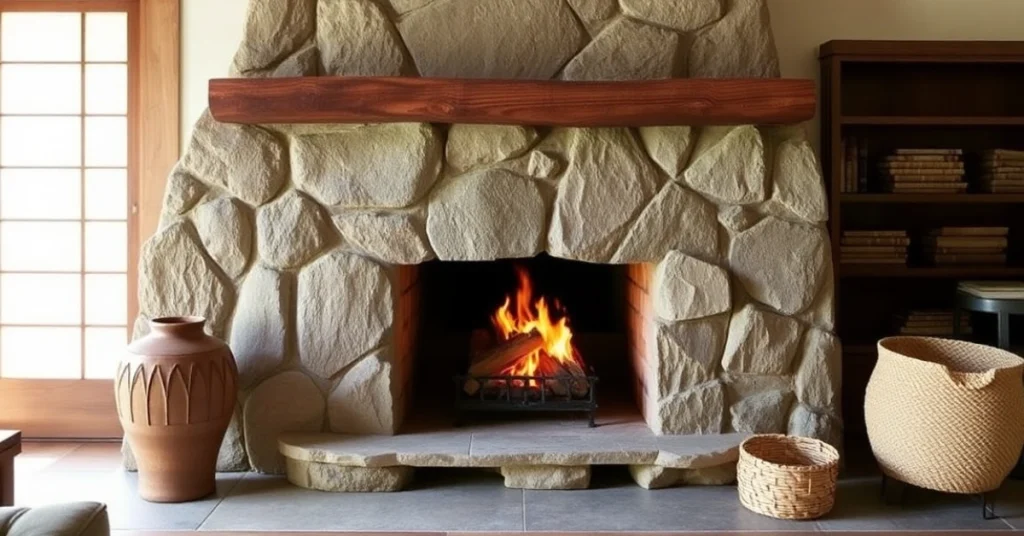
- Tip: Add a single piece of pottery or a woven basket nearby to enhance the organic feel.
Materials and Textures in Japandi Fireplace Design
The choice of materials is critical in Japandi fireplace design. Here’s a breakdown of the best options:
| Material | Why It Works | Best Use |
|---|---|---|
| Stone | Adds durability and natural texture | Surrounds, hearths |
| Wood | Brings warmth and organic beauty | Mantels, accents |
| Ceramic | Offers subtle patterns and elegance | Tiles, decor |
| Concrete | Provides a modern, industrial edge | Hearths, surrounds |
| Plaster | Creates a soft, seamless look | Wall-integrated fireplaces |
- Pro Tip: Mix textures thoughtfully. For example, pair smooth plaster with rough wood to create contrast without chaos.
- Source: House Beautiful notes that natural materials are a top trend in 2025 fireplace designs.
Color Palettes for Japandi Fireplaces
Japandi fireplace designs rely on neutral, earthy colors to create a calming atmosphere. Popular choices include:

- Soft Whites: Brighten the space and enhance minimalism.
- Warm Grays: Add sophistication without feeling cold.
- Muted Browns: Evoke natural wood and earth tones.
- Charcoal: Create a bold yet grounded accent.
Avoid vibrant colors or busy patterns, as they disrupt the serene Japandi aesthetic. Designer Hana Sato advises, “Choose colors that feel like a whisper, not a shout.”
Practical Tips for Designing a Japandi Fireplace
Here are actionable tips to bring Japandi fireplace design into your home:

- Prioritize Simplicity: Avoid overloading the mantel with decor. One or two meaningful items, like a ceramic vase or a small plant, are enough.
- Incorporate Natural Light: Place the fireplace near a window to balance warmth with brightness.
- Choose Energy-Efficient Options: Opt for gas or electric fireplaces for eco-friendly heating. Energy Star reports that modern gas fireplaces are up to 70% more efficient than wood-burning ones.
- Blend Textures: Combine smooth and rough materials, like polished stone with raw wood, for depth.
- Keep It Functional: Ensure the fireplace is easy to use and maintain, aligning with Japandi’s practical ethos.
- Add Cozy Elements: Place a woven rug or cushioned seating nearby to enhance Scandinavian hygge.
Common Mistakes to Avoid in Japandi Fireplace Design
Even with the best intentions, it’s easy to miss the mark. Here are pitfalls to avoid:
- Over-Decorating: Too many accessories clutter the space and dilute minimalism.
- Ignoring Proportion: A fireplace that’s too large or small can disrupt the room’s balance.
- Using Harsh Colors: Bright or clashing colors break the serene Japandi vibe.
- Neglecting Functionality: A beautiful fireplace that’s hard to use or clean won’t serve its purpose.
- Overlooking Texture: Flat, uniform materials can make the design feel sterile.
Real-World Examples of Japandi Fireplace Design
To illustrate the versatility of Japandi fireplace design, here are two real-world examples:
- Urban Loft in Tokyo: A small apartment used a corner gas fireplace with a white plaster surround and a low oak bench. The minimalist design made the space feel larger while providing warmth.
- Scandinavian Cottage in Oslo: A double-sided fireplace with a stone hearth and wooden accents divided the living and dining areas, creating a cozy yet open atmosphere.
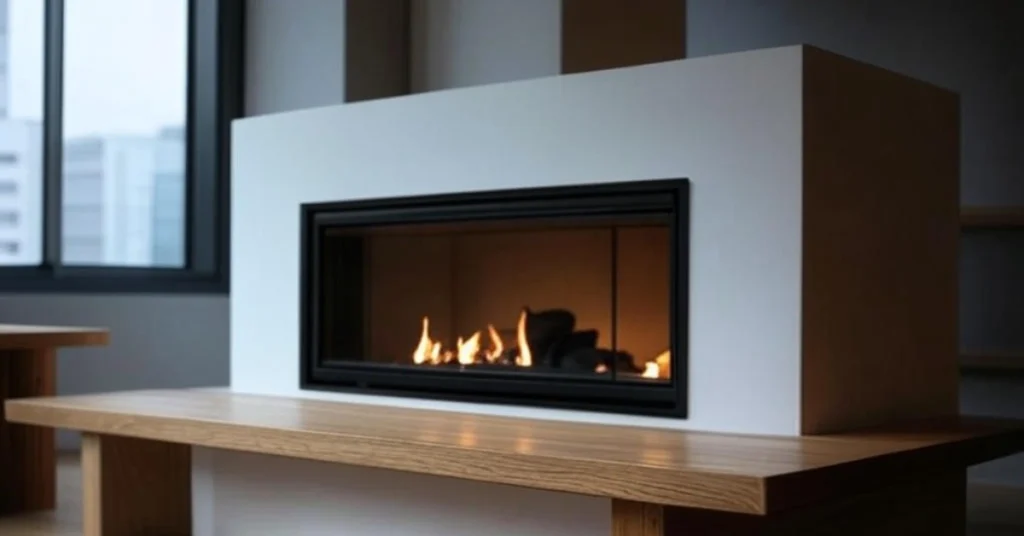
These examples show how Japandi fireplaces adapt to different spaces while maintaining their core principles.
How to Maintain Your Japandi Fireplace
To keep your fireplace looking and functioning its best:
- Clean Regularly: Remove ash or soot from wood-burning fireplaces weekly. For gas or electric models, wipe down surfaces to prevent dust buildup.
- Inspect Annually: Have a professional check gas lines or chimneys to ensure safety, as recommended by the National Fire Protection Association.
- Update Decor Seasonally: Swap out mantel decor with simple, seasonal items like dried branches in fall or a single candle in winter.
- Protect Materials: Use sealants on stone or wood to prevent wear and tear.
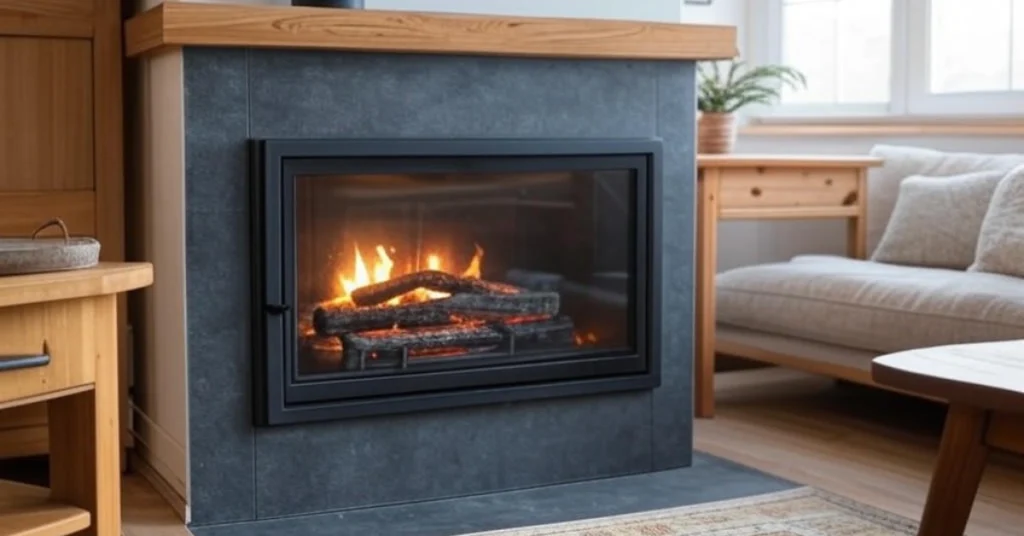
Conclusion: Elevate Your Home with Japandi Fireplace Design
Japandi fireplace design offers a perfect blend of elegance and comfort, making it an ideal choice for homeowners seeking a timeless focal point. By embracing minimalism, natural materials, and neutral tones, you can create a fireplace that not only warms your space but also elevates its aesthetic appeal. Whether you opt for a sleek stone surround, a floating concrete hearth, or a tiled masterpiece, the key is to balance form and function while staying true to the Japandi philosophy.
Ready to transform your living space? Start planning your Japandi fireplace design today and create a cozy, minimalist haven that stands the test of time. Share your ideas in the comments or consult a local designer to bring your vision to life!




